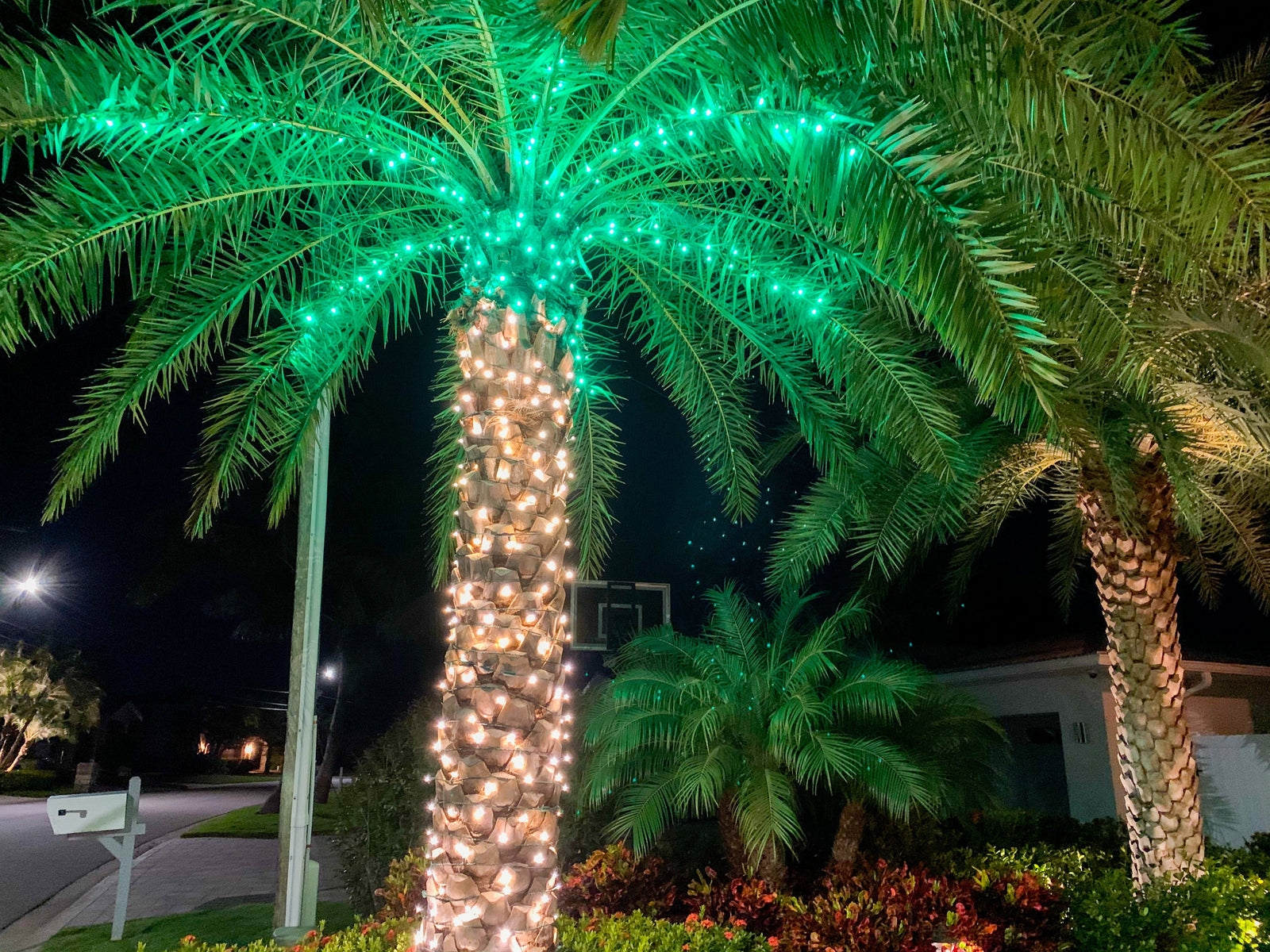When most people think of Christmas lights, they picture sparkling, shimmering lights shining through a soft snowfall on a crisp winter night. However, Christmas lights are used equally as often in warm climates graced with heat and sunshine during the holiday season. Sometimes lights are even left up year-round (why not?!) and exposed to hot summers. The sun can wreak havoc on seasonal Christmas lights if factories have only considered cold climate usage. Here are 3 qualities to look for in Christmas lights to ensure they can withstand both the heat and UV:
1. Anti-UV Stabilizers in Bulbs
These are essential for the long-term durability of your lights. Without stabilizers bulbs will quickly go cloudy, block light, and change colour. They can even become brittle and crack, which makes them susceptible to moisture from rain. When a bulb finally fails and you go to replace it, the replacement bulb will be noticeably brighter than the set, making the display look off-kilter and unsightly. With enough failed bulbs, you’ll be forced to make a full replacement of the set of lights (including all bulbs that still work) in order to get the display looking great again.
Anti-UV polymer stabilizers are applied prior to shaping the lens via injection molding. They act by absorbing the UV radiation in a controlled manner and dissipating the energy as low-level heat. Chemicals used are similar to those in sunscreen products.
2. Thicker Wire Casings
The insulating plastic casing around Christmas light wire typically comes in two different sizes: SPT1 and SPT2, latter being slightly thicker. This thicker wire will stay softer for longer periods of time in the sun and will also resist cracking. The problem with wire casing becoming hard and brittle is that moisture can then reach the copper core and cause corrosion. The corrosion will increase resistance, and the wire will attempt to draw more power than it’s designed for, creating an electrical hazard.

Both 18AWG wire, thicker SPT 2 casing on the left wire.
3. Nylon
One of the best polymers that is inherently UV stabilized is nylon. While this adds to the cost, the lifetime of the product is significantly improved. This is why sails, beach chairs, and tents, for example, use this material. Christmas light clips are also an ideal product to include nylon in their composition because it holds its elasticity for much longer. This makes them reusable season-after-season, saving frequent replacement costs as a result. Without nylon, your roofline lights could come crashing down all at once when a handful of clips begin to fail after a single season.
4. Multi-clips with UV stabilizers.
Building Christmas lights to withstand a diverse range of climates - from extreme cold to extreme heat - not to mention all kinds of precipitation, provides an interesting challenge for manufacturers. At Big Star Lights, we distribute lights from Whitehorse and The Yukon in Northern Canada to Miami, Florida in the southern States, so our products have to withstand every kind of weather imaginable. By making a few considerations to your intended use and climate, you can help ensure your display remains beautiful for years to come.


